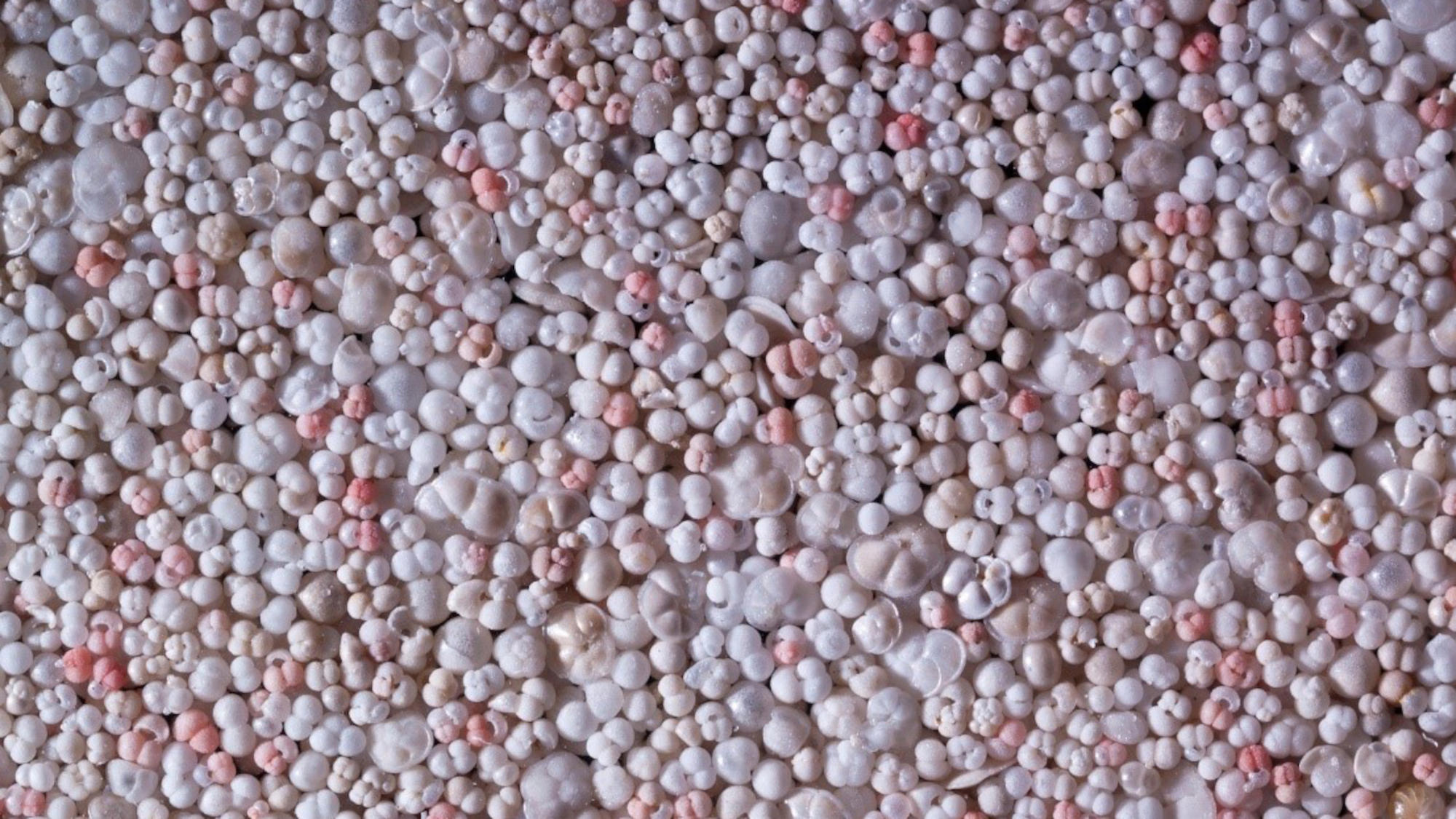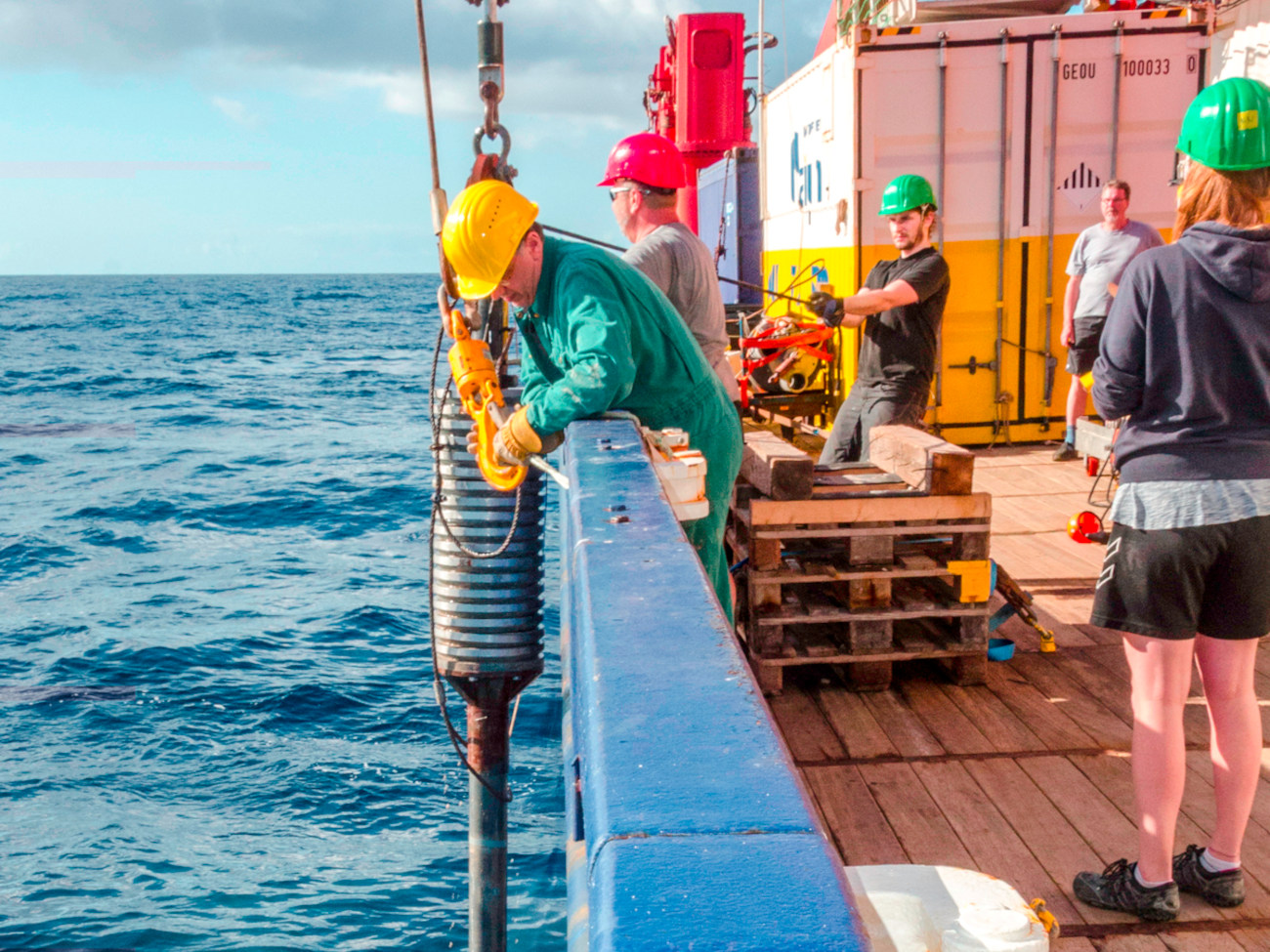
© Wilfried Rönnfeld
Marine Biodiversity – A Tale of Change
Researchers from the universities of Bremen and Oldenburg are looking into the impact of climate change on marine life
Sediment cores from the Atlantic Ocean, dating back several thousand years, show how marine life might evolve with climate change. This is the result of a joint study by a team of researchers from Oldenburg and Bremen.
The marine environment will change with climate change. That much is certain. Some parts of the ocean will warm faster than others, and ocean currents will change. For several years, researchers have observed that algae and animals from the southern latitudes of the Atlantic Ocean are moving into the North Sea because it is also getting warmer. However, the extent to which climate change will change the biology of the oceans is difficult to estimate today. No one can look into the future and predict what ecological communities will look like in 100 or even 500 years.
Yet, in order to get an idea of how human-induced climate change might affect the future, geologists and biologists from the universities of Bremen and Oldenburg are looking to the past – to the period after the last Ice Age, when the climate changed very rapidly: Around 18,000 years ago, the average global temperature increased dramatically. Within 7,000 years, the average temperature had risen by five degrees – a huge jump.
“We studied the changes in plankton communities in the Atlantic Ocean at that time – in order to learn from this for the future,” says Tonke Strack from MARUM - Center for Marine Environmental Sciences at the University of Bremen. Strack is a geoscientist specializing in the analysis of sediment cores from the sea floor. Such cores contain the sediments of organisms that have sunk to the sea floor after they have died – such as the shells of plankton, organisms that are often only a few thousandths to one millimeter in size.
Researchers Analyzed Sediment Cores from Various Research Trips
In the current research project, Strack analyzed data from sediment cores from many different research expeditions. This data is stored in the open-access PANGAEA database and can be used for applications such as Strack’s research project. The researchers analyzed sediment core data from the entire North Atlantic Ocean, from the South American and West African coasts to Greenland.

© Paul Wintersteller
The data contains information about when and how many certain species of plankton were found in different regions of the ocean. Strack studied three groups of tiny marine organisms – coccolithophores, dinoflagellates, and planktonic foraminifera. All of them are unicellular organisms that form hard shells that accumulate in the sediment.
The results show that the composition of the plankton changed significantly as temperatures rose between 18,000 and 9,000 years ago. In particular, there was a clear northward trend. As water temperatures rose, more southern species migrated to temperate climate zones. From the temperate zones, in turn, some species spread further north. Overall, the number of species increased, especially in the temperate climates.
One detail is particularly interesting: Although the average global temperature did not increase significantly over the next 9,000 years, ecological communities continued to change. The effects of global warming were felt for almost another 4,000 years. Only after this time, the range of species slowly stabilized and hardly changed any further. “We see this effect, above all, in the dinoflagellates and foraminifera,” Strack states.
Fruitful Collaboration between the Universities of Bremen and Oldenburg
To cover the ecological dimension of this work, Strack worked closely with researchers from the Institute for Chemistry and Biology of the Marine Environment at the University of Oldenburg as part of the “The Ocean Floor – Earth’s Uncharted Interface” Cluster of Excellence. “The collaboration has been absolutely fruitful,” says Oldenburg evolutionary biologist Dr. Marina Costa Rillo.
“We want to understand the extent to which marine environment and biodiversity are changing as a result of climate change. And somehow we have to estimate how significant this change is. But we have very little long-term data.” This is because, until a few decades ago, researchers hardly ever systematically recorded the number of marine organisms in different regions. As a result, there is no baseline against which researchers can assess and evaluate the current changes in the oceans.
“Tonke’s data give us a picture of how communities of species can change over time as a result of climate change. They also show that these changes may be different than expected,” says Rillo. For example, we would have expected that the communities of dinoflagellates and foraminifera would not change further if the strong global warming stopped, as it did 9,000 years ago.
For Strack, the collaboration with Rillo has been beneficial, because she looks at the geological information from the sediment cores from an ecological perspective. “You can measure biodiversity in the sea in many different ways. You can look at whether the individuals of a species are increasing, or you can just measure the number of species,” Rillo states. “Therefore, you have to have a very clear idea of what exactly you want to measure.”
To measure the impact of climate and ecological change, the team from Bremen and Oldenburg decided to measure the frequency distribution of species – in other words, the percentage of individual species in different areas of the Atlantic Ocean.
Of course, Tonke Strack and Marina Costa Rillo cannot predict how the marine communities will develop in the future. But it is clear that the effects of climate change may be more complex than expected. “In addition to the warming of the last 24,000 years, human-induced climate change is now causing further warming,” Strack explains.
“For organisms that have adapted to warm conditions, it is now getting even warmer – and much faster than after the last glaciation.”
Back then, the temperature rise took over 7,000 years. Now, if things go badly, it could be another four to five degrees warmer in just a few hundred years. Strack and Rillo plan to continue their collaboration in the future, and their results will be included in the application for the joint cluster of excellence of the universities of Oldenburg and Bremen. The researchers are also interested in how biodiversity in the oceans can be better protected. “For this, the interdisciplinary cooperation between the two universities is particularly important,” Strack emphasizes. “Among other things, we want to find out how we can use information from the past to support current conservation policy and thus better manage the effects of human-induced climate change.”